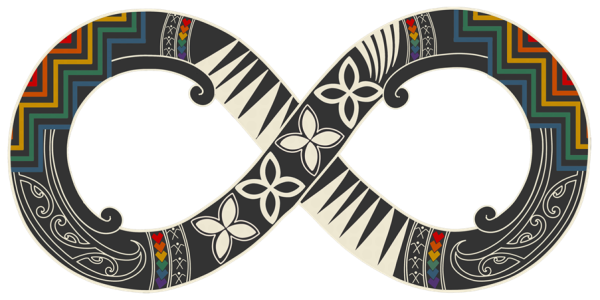Section 2.1: Guidance and support for co-designing with consumers, whānau and communities
On 25 August 2022, the code of expectations for health entities’ engagement with consumers and whānau was officially launched at Parliament. The code applies to Te Whatu Ora, Te Aka Whai Ora, Pharmac, New Zealand Blood Service and the Health Quality & Safety Commission. In this first of a six-part series, we look at one aspect of the code in more detail and offer some tips on how to apply it.
Section 2.1 of the code states that health entities must apply engagement expectations by:
‘co-designing with consumers, whānau and communities so there is collective development of organisational priorities, processes and evaluation, and consumers, whānau and communities are involved at all levels.’
What do we mean by co-design?
Co-design is a term that is used widely in Aotearoa New Zealand to describe the involvement of people in the design of health-related processes, services, information, models of care, strategies, environments and policies that impact them. It may also be called participatory approaches, co-creation and co-production, each of which can be interpreted slightly differently. Co-design intentionally brings consumers, whānau, communities and staff together to understand their experiences and gather their ideas for improvement to protect, promote and improve the health system and achieve equitable health outcomes for all New Zealanders.
Co-design is a stand-alone improvement method that can also be used as part of a larger improvement initiative. Using co-design in the health sector will support improvements and enable provision of care that meets the needs of consumers, whānau and communities. In turn, this will improve the health of and equity for all populations in Aotearoa New Zealand.
Watch a video ‘Co-design explained in 30 seconds with Susanne Cummings from Vaka Tautua’ below.
Why use co-design
Co-design is a purpose-driven initiative that enables us to discover unique perspectives through collaboration and to include user and stakeholder opinions in key decisions.
It is an intentional process in which target users and staff are involved in designing solutions. It is important to gather, analyse and test feedback before making decisions and implementing solutions.
The role of consumers and whānau is to advocate for their experiences within the health system. Often, this advocacy can also become a broader representation of a whānau or community’s views, strengths and health needs.
The inclusive and participatory co-design process aligns with Te Tiriti o Waitangi principles of partnership, active participation, equity and options (Waitangi Tribunal 2019).
Benefits of co-design
A recent systematic review of co-design in Aotearoa New Zealand suggests that co-design was valued for ‘capacity building’ (Toko King et al 2022). Collaboration with stakeholders allows consumers and whānau to participate in, and their voices to be incorporated into, policies, practice and initiatives.
- Health providers and organisations can expect a wide range of benefits when integrating co-design in their business-as-usual practice. These can include an improved creative process, better service definitions, a more efficiently organised project and improved patient, whānau and staff experiences.
In line with Te Tiriti principles, co-design offers an opportunity for whānau Māori and Māori communities and organisations to lead and partner with health systems right from the start of a project through implementation, evaluation and sustainability.

Image credit: Huriana Kopeke-Te Aho. The infinity symbol represents ‘closing the loop’.
Engaging with consumers and whānau at different levels
The lived-experience level
Consumer and whānau members share their lived experiences of the health system, which provides valuable insights and ideas that lead to improvements; for example, gathering consumers’ experiences with and thoughts on topics such as patient information and how to improve it or understanding consumer experiences of and challenges with accessing primary care.
Project team membership level
Consumers and whānau with experience of the area of focus are prepared, supported and resourced to contribute their unique skills as an active member of a project team; for example, identifying community connections and advising on and developing methods so consumers can share their experiences.
Governance level
This can include but is not limited to consumers and whānau providing their unique lived experiences on boards, steering groups and committees. Specifically, co-design at the governance level is characterised by two-way flow of information and shared power and responsibility. Consumers play an active part in defining agendas and making decisions. For example, consumer advisory groups and consumer councils provide a strong voice for consumers, whānau and the community so they can engage with and advise on the planning, design, delivery and evaluation of services so they are more likely to meet the needs of the people who use them.
Fundamentals of co-design
- Inform consumers and whānau about how they can be involved and how they will be supported to guide the evaluation, design and development of health system priorities, processes and
- Develop consumer-friendly questions (surveys, interviews, hui) with an evaluation team and, where possible, an ethics advisory group.
- Consider testing questions on consumers from another consumer advisory group project team (with similar demographics).
- Think about data sovereignty and be able to explain your policy for the data you collect.
- Begin any project with a plan to close the communication loop.
Resources
- Free open access introduction to co-design e-learning module: click here.
- Elevator pitch tip sheet: click here.
- Co-design case study: Susanne Cummings (view on YouTube).
- Project case studies, resources, reviews and evaluations: click here.
- Co-design in Aotearoa New Zealand: a snapshot of the literature: download PDF here.
References
Toko King P, Cormack D, Edwards R, et al. 2022. Co-design for indigenous and other children and young people from priority social groups: a systematic review. SSM – Population Health 18: 101077. DOI: 10.1016/j.ssmph.2022.101077.
Waitangi Tribunal. 2019. Hauora: Report on Stage One of the Health Services and Outcomes Kaupapa Inquiry (Wai 2575). URL: https://waitangitribunal.govt.nz/inquiries/kaupapa-inquiries/health-services-and-outcomes-inquiry (accessed 12 April 2022).
